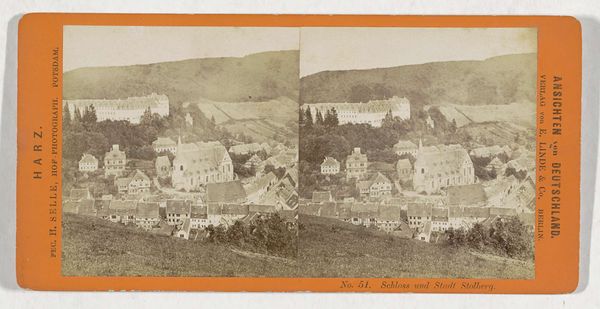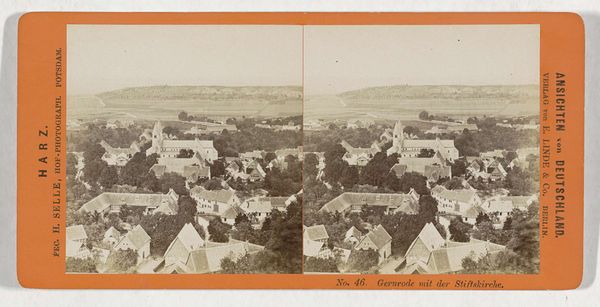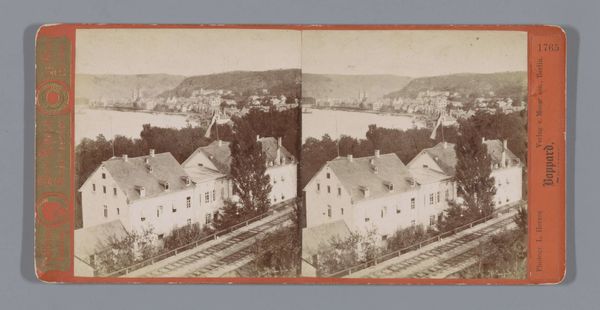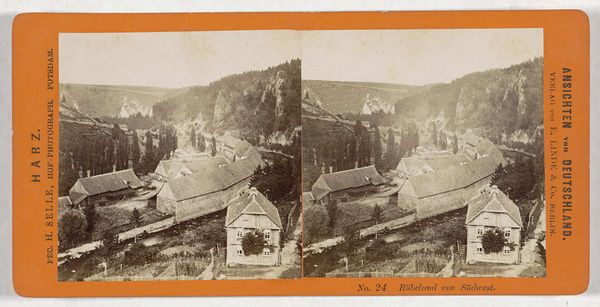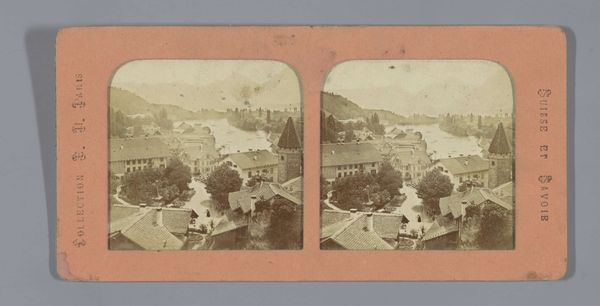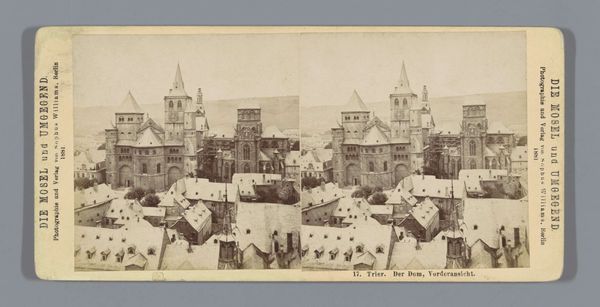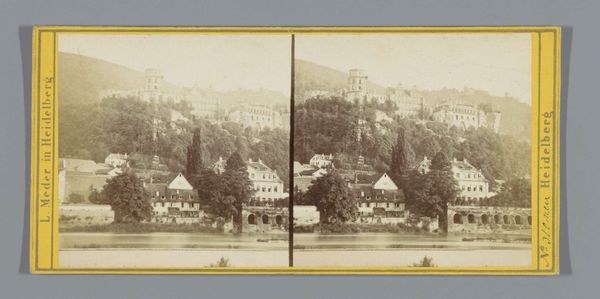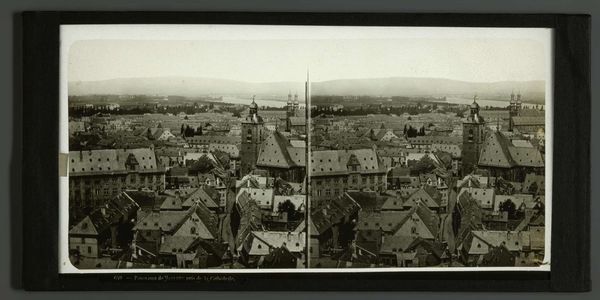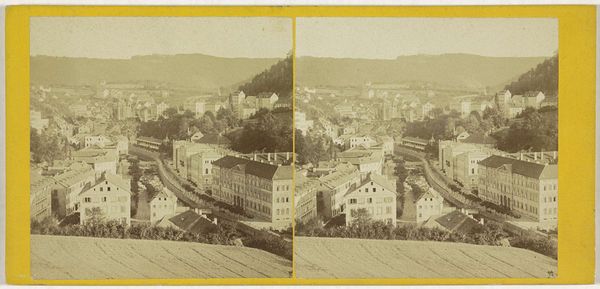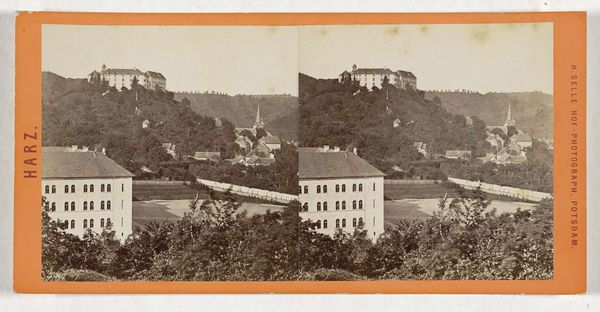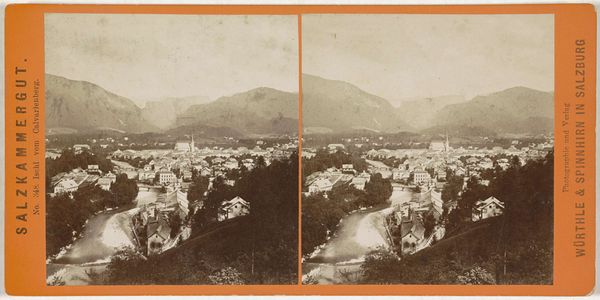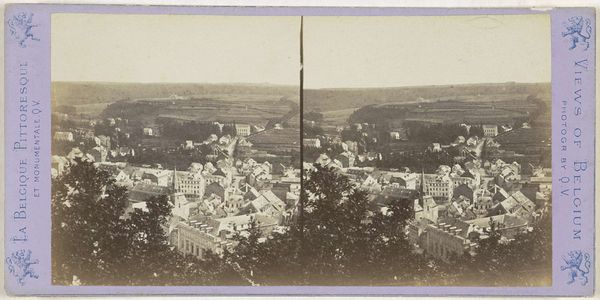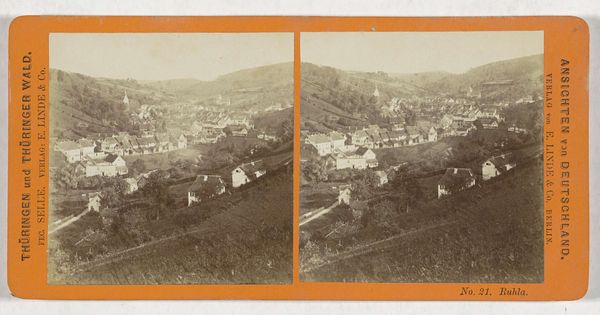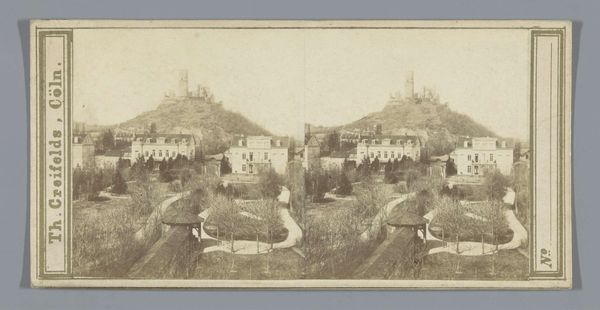
Dimensions: height 87 mm, width 176 mm
Copyright: Rijks Museum: Open Domain
Curator: This is Hermann Selle’s photographic print, dating from around 1868 to 1890, titled "Gezicht op de stad Stolberg met het kasteel en Sint-Martinikerk"—a view of the town of Stolberg with its castle and St. Martin’s Church. Editor: It's immediately striking how this stereoscopic format enhances the sense of depth. The buildings seem to pop right out, yet there’s a slightly eerie stillness to the scene. Almost ghostly. Curator: Well, pictorialism often evokes that, doesn’t it? It's less about capturing objective reality and more about conveying a mood. This particular photographic style became fashionable during that era. Editor: Absolutely. Notice how the composition emphasizes the textures – the rough, weathered surfaces of the roofs, the slight blurring in the background suggesting distance. Curator: And Selle's choice to focus on Stolberg is intriguing. It reflects the burgeoning interest in the architectural and historical value of smaller towns, places that represented the authentic Germany that artists and intellectuals romanticized against rapid industrialisation and political change. Editor: I agree. The sharp details against the faded sepia tones do create an almost wistful feeling, as though it is longing to preserve the moment in time, the essence of a bygone era. But looking at its components–church, castle, tightly packed houses—there's a clear visual hierarchy that establishes social order and a clear power structure in the town. Curator: That power is palpable, though filtered through the aesthetic lens of Pictorialism, designed, if you will, to soften its sharp edges. Editor: It's remarkable how much information this single image conveys about aesthetics and socio-political themes. It is definitely much deeper than its looks. Curator: Indeed, looking beyond the aesthetic surface unlocks a dialogue with the history and societal attitudes embedded within. Editor: Definitely food for thought, this work really encapsulates the historical moment in terms of photographic expression.
Comments
No comments
Be the first to comment and join the conversation on the ultimate creative platform.
